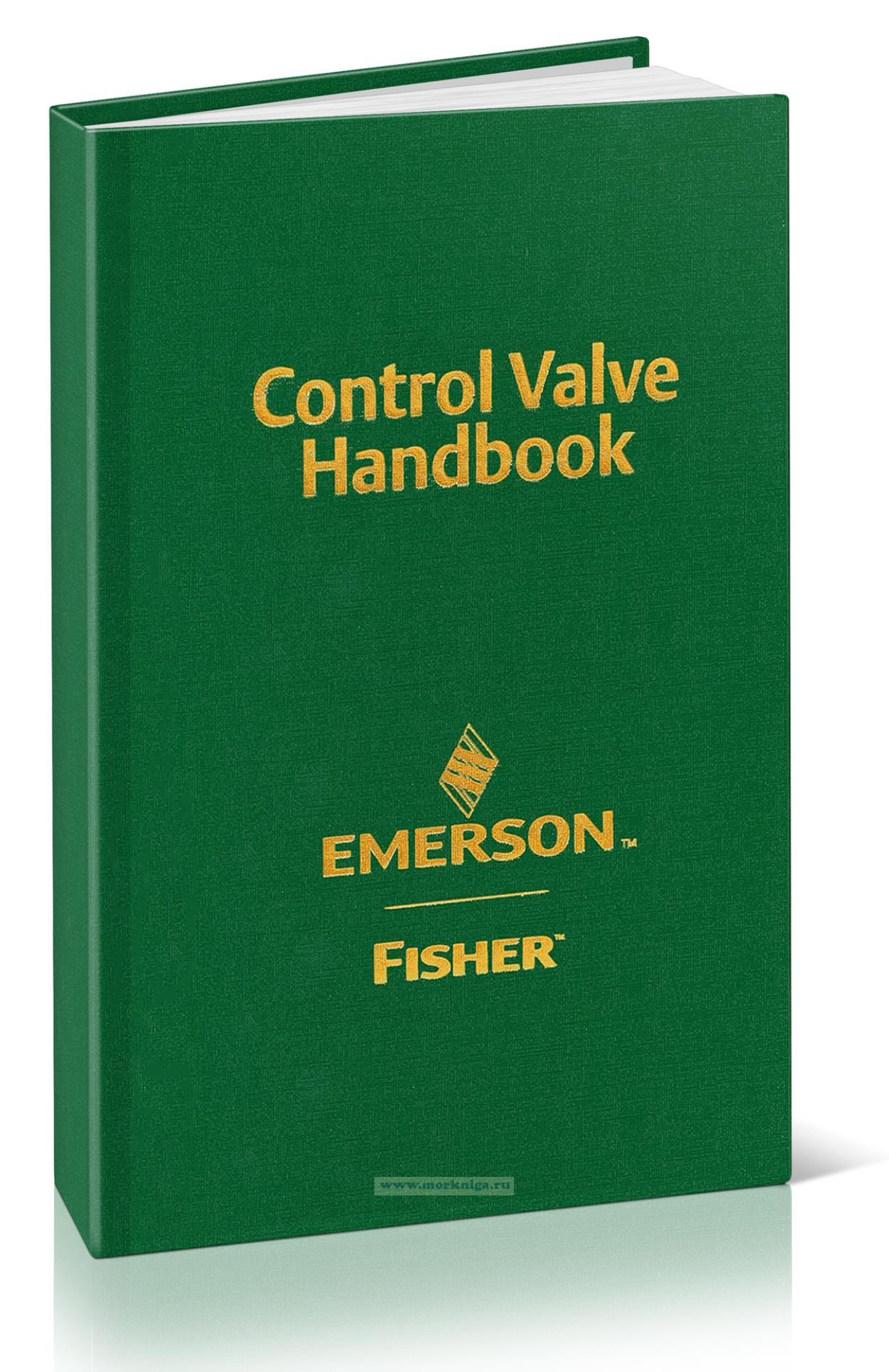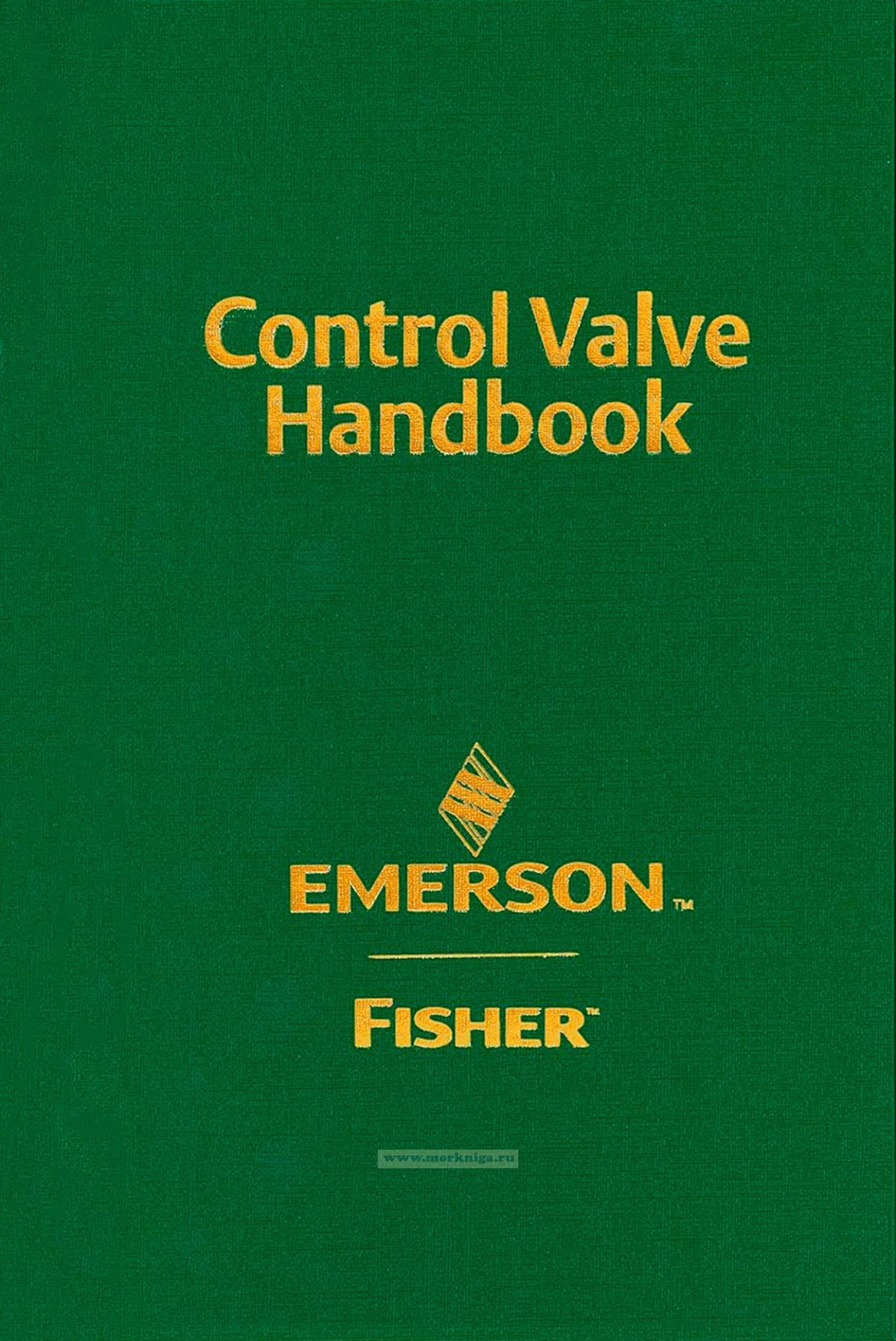Control Valve Handbook / Руководство по регулировочным клапанам
Книга на английском языке
См также Control Valve Handbook Fourth Edition 2005
In the full-color fifth edition of the process control industry’s go-to resource for valves, you can find helpful sizing charts, industry terms and definitions, and technology overviews. New chapters have been added about safety instrumented systems (SIS), discrete automation, and isolation valves.
Contents
Chapter I: Introduction to Control Valves
1.1 What is a Control Valve?
1.2 Sliding-Stem Control Valve Terminology
1.3 Rotary Control Valve Terminology
1.4 Control Valve Functions and Characteristics Terminology
1.5 Process Control Terminology
Chapter 2: Control Valve Performance
2.1 Process Variability
2.2 Economic Results
2.3 Signature Series Performance Testing
2.4 Summary
Chapter 3: Valve and Actuator Types
3.1 Control Valve Styles
3.2 Control Valve End Connections
3.3 Valve Body Bonnets
3.4 Control Valve Packing
3.5 Characterization of Cage-Guided Valve Bodies
3.6 Valve Plug Guiding
3.7 Restricted-Capacity Control Valve Trim
3.8 Actuators
Chapter 4: Control Valve Accessories
4.1 Environmental & Application Considerations
4.2 Positioners
4.3 I/P Transducers
4.4 Volume Boosters
4.5 Safety Instrumented Systems (SIS)
4.6 Optimized Digital Valves
4.7 Controllers
4.8 Position Transmitters
4.9 Limit Switches
4.10 Solenoid Valves
4.11 Trip Systems
4.12 Switching Valves
4.13 Handwheels
Chapter 5: Control Valve Sizing
5.1 Control Valve Dimensions
5.2 Control Valve Seat Leakage Classifications
5.3 Class VI Maximum Seat Leakage Allowable
5.4 Control Valve Flow Characteristics
5.5 Valve Sizing
5.6 Abbreviations and Terminology
5.7 Equation Constants
5.8 Sizing Valves for Liquids
5.9 Sizing Valves for Compressible Fluids
5.10 Representative Sizing Coefficients
5.11 Actuator Sizing
5.12 Actuator Sizing for Rotary Valves
5.13 Typical Rotary Valve Torque Factors
5.14 Cavitation and Flashing
5.15 Noise Prediction
5.16 Noise Control
5.17 Noise Summary
5.18 Packing Selection
5.19 Valve Body Materials
5.20 Pressure-Temperature Ratings
5.21 Non-Metallic Material Abbreviations
5.22 Non-Destructive Test Procedures
Chapter 6: Special and Severe Service Control Valves
6.1 High-Capacity Control Valves
6.2 Low-Flow C Control Valves
6.3 High-Temperature Control Valves
6.4 Cryogenic Service Valves
6.5 Valves Subjected to Cavitation and Fluids with Particulate
6.6 Customized Characteristics. Noise Abatement, and Cavitation Mitigation Trims
6.7 Control Valves for Nuclear Service in North America
6.8 Valves Subjected to Sulfide Stress Cracking
Chapter 7: Steam Conditioning
7.1 Understanding Desuperheating
7.2 Typical Desuperheater Designs
7.3 Understanding Steam Conditioning Valves
7.4 Steam Conditioning Valves
7.5 Understanding Turbine Bypass Systems
7.6 Turbine Bypass System Components
Chapter 8: Installation and Maintenance
8.1 Proper Storage and Protection
8.2 Proper Installation Techniques
8.3 Control Valve Maintenance
8.4 Service and Repair Parts
8.5 Actuator Maintenance
8.6 Shutdown, Turnaround, Outage Planning Process
Chapter 9: Standards and Approvals
9.1 Control Valve Standards
9.2 Product Approvals for Hazardous (Classified) Locations
9.3 Classification Systems
9.4 Temperature Code
9.5 Nomenclature
9.6 Protection Techniques and Methods
9.7 Enclosure Ratings
Chapter 10: Isolation Valves
10.1 Basic Valve Types
Chapter 11: Sustainability
11.1 Sustainability
11.2 Energy Reduction and Efficiencies
11.3 Decarbonization
11.4 Greening OF
11.5 Greening By
11.6 Greening With
11.7 Net-Zero Ambitions
11.8 ESC
11.9 ESC - Approach by Companies
11.10 Maximizing ESC through Collaboration
11.11 Conclusion
11.12 Commonly Used Terms in Sustainability
Chapter 12: Safety Instrumented Systems
12.1 Safety and Layers of Protection
12.2 Safety Instrumented Systems (SIS)
12.3 Safety Standards
12.4 Safety Integrity Level (SIL)
12.5 Probability of Failure Upon Demand
12.6 Final Elements. Proof Testing, and Partial Stroke Testing Techniques
12.7 Partial Stroke Testing
12.8 Online Testing Methods for the Final Element
12.9 Digital Valve Controller Use for Partial Stroke Testing
12.10 High-Integrity Pressure Protection System (HIPPS)
12.11 Functionality of the HIPPS
12.12 Testing Requirements
Chapter 13: Engineering Data
13.1 Standard Specifications for Pressure-Retaining Valve Materials
13.2 Valve Material Properties for Pressure-Containing Components
13.3 Physical Constants of Hydrocarbons
13.4 Specific Heat Ratio (k)
13.5 Physical Constants of Various Fluids
13.6 Refrigerant 717 (Ammonia) Properties of Liquid and Saturated Vapor
13.7 Properties of Water
13.8 Properties of Saturated Steam
13.9 Properties of Superheated Steam
Chapter 14: Pipe Data
14.1 Pipe Engagement
14.2 Carbon and Alloy Steel - Stainless Steel
14.3 American Pipe Flange Dimensions
14.4 Cast Steel Flange Standards
Chapter 15: Conversions and Equivalents
15.1 Length Equivalents
15.2 Whole Inch to Millimeter Equivalents
15.3 Fractional Inch to Millimeter Equivalents
15.4 Additional Fractional Inch to Millimeter Equivalents
15.5 Area Equivalents
15.6 Volume Equivalents
15.7 Volume Rate Equivalents
15.8 Mass Conversion-Pounds to Kilograms
15.9 Pressure Equivalents
15.10 Pressure Conversion-Pounds Per Square Inch to Bar
15.11 Temperature Conversion Formulas
15.12 Temperature Conversions
15.13 API and Baume Gravity Tables and Weight Factors
15.14 Other Useful Conversions
15.15 Metric Prefixes and Suffixes
Index
Additional Resources

